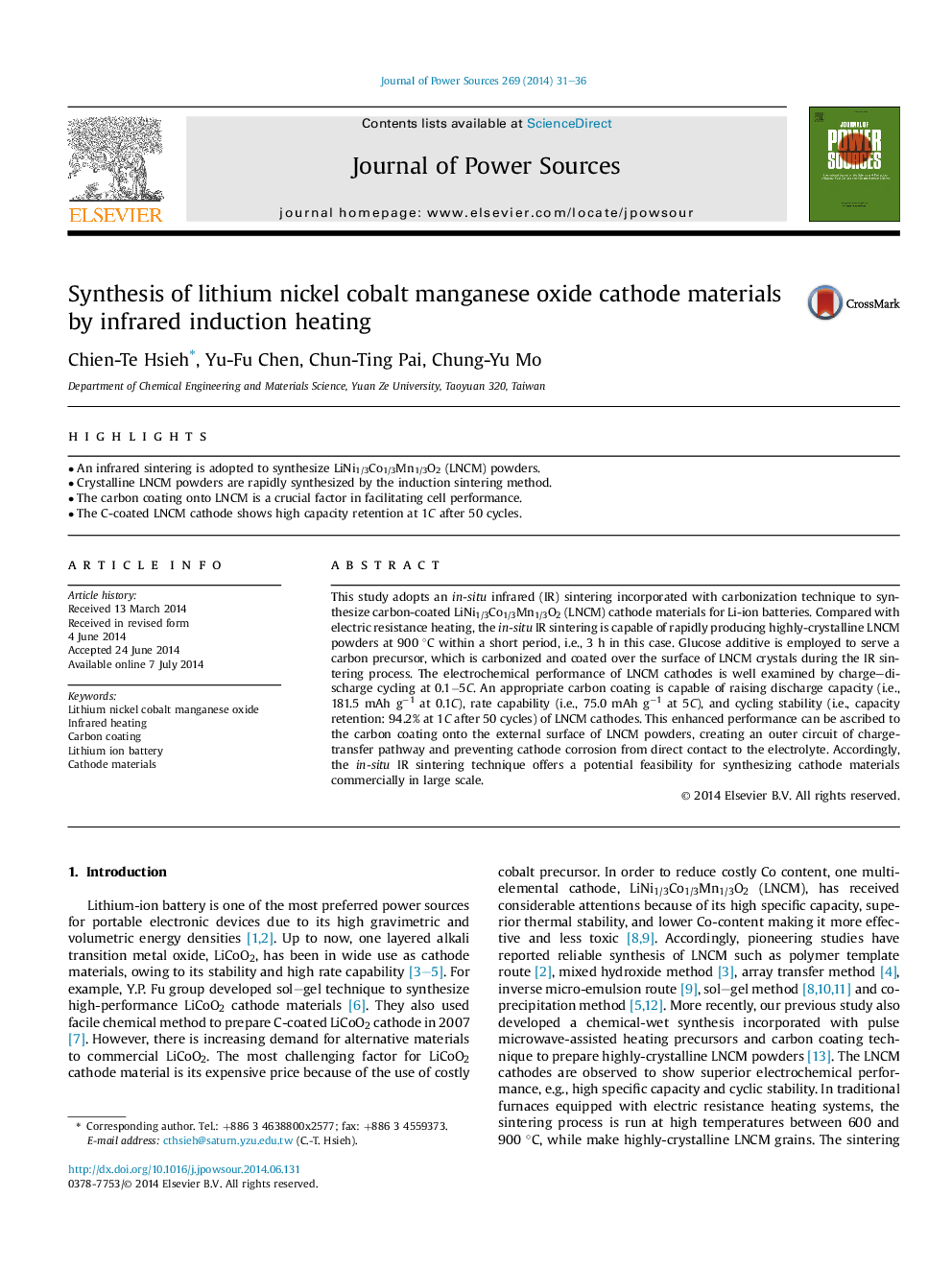| Article ID | Journal | Published Year | Pages | File Type |
|---|---|---|---|---|
| 7736168 | Journal of Power Sources | 2014 | 6 Pages |
Abstract
This study adopts an in-situ infrared (IR) sintering incorporated with carbonization technique to synthesize carbon-coated LiNi1/3Co1/3Mn1/3O2 (LNCM) cathode materials for Li-ion batteries. Compared with electric resistance heating, the in-situ IR sintering is capable of rapidly producing highly-crystalline LNCM powders at 900 °C within a short period, i.e., 3 h in this case. Glucose additive is employed to serve a carbon precursor, which is carbonized and coated over the surface of LNCM crystals during the IR sintering process. The electrochemical performance of LNCM cathodes is well examined by charge-discharge cycling at 0.1â5C. An appropriate carbon coating is capable of raising discharge capacity (i.e., 181.5 mAh gâ1 at 0.1C), rate capability (i.e., 75.0 mAh gâ1 at 5C), and cycling stability (i.e., capacity retention: 94.2% at 1C after 50 cycles) of LNCM cathodes. This enhanced performance can be ascribed to the carbon coating onto the external surface of LNCM powders, creating an outer circuit of charge-transfer pathway and preventing cathode corrosion from direct contact to the electrolyte. Accordingly, the in-situ IR sintering technique offers a potential feasibility for synthesizing cathode materials commercially in large scale.
Keywords
Related Topics
Physical Sciences and Engineering
Chemistry
Electrochemistry
Authors
Chien-Te Hsieh, Yu-Fu Chen, Chun-Ting Pai, Chung-Yu Mo,
